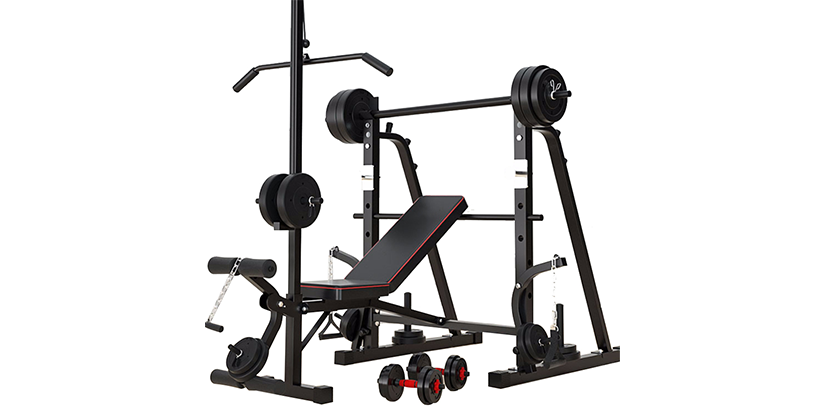A bench dumbbell workout quickly became my fallback when all I had was a flat bench, some dumbbells, and no clue if that setup was enough. I kept wondering—can you really build strength without racks, machines, or anyone spotting you?
So I broke it all down here — chest and back, shoulders, and legs/core. If you’ve got the same setup I had, this might save you a ton of guesswork.
Chest and Back Workout with Dumbbells
This combo hits push and pull in one go. Classic and effective.
- Incline Dumbbell Press – Chest builder with shoulder support
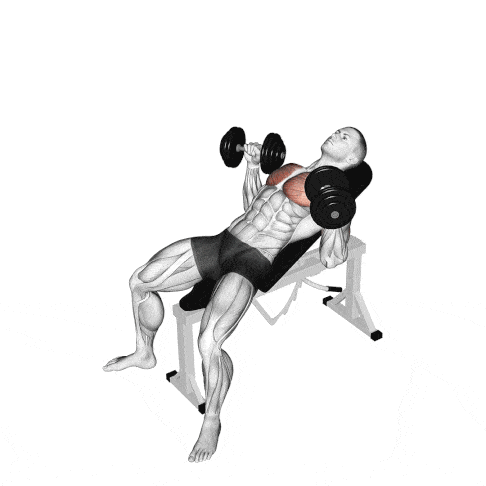
How I do it:
- I set my bench to a 30–45° incline.
- I lie back with dumbbells in each hand, elbows bent.
- Then I press them up until my arms are straight.
- Lower with control — no rushing.
Target:
Mostly upper chest. Also hits the front shoulders and triceps.
Tips:
I keep my wrists locked and don’t let the dumbbells drift outward. That keeps tension in the chest and saves my shoulders.
- Dumbbell Flyes – Stretch and isolate those pecs
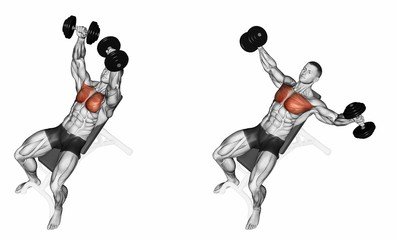
How I do it:
- So, I lie flat on the bench and bring the dumbbells up right over my chest — arms slightly bent, nothing stiff. Then, slowly, I open up wide like I’m about to hug a big tree or something.
- Eventually, I feel that sweet stretch in my chest — that’s my cue to bring ’em back in.
- Altogether, it’s a smooth, controlled move — no jerking, no rushing.
Target:
This one’s all chest — especially the inner and outer pecs. A little front shoulder work, too.
Tips:
I go lighter on this one. It’s about feeling the stretch and the squeeze — not moving big weight.
- Chest-Supported Rows – Upper back work without trashing your lower back

How I do it:
- I set my bench at an incline again and lie face down on it.
- Dumbbells in hand, arms hanging.
- Then I pull them up to my sides, squeezing my shoulder blades together.
- Lower slow.
Target:
Mainly back — lats, traps, rhomboids, and rear delts.
Tips:
Honestly, I make sure to lead with my elbows and keep my chin tucked the whole time. Otherwise, if I start feeling it too much in my arms, then something’s off — like I’m cheating the move.
👉 New to training with dumbbells?
Here’s a Chest and Back Workout with Dumbbells you can actually stick to.
Dumbbell Shoulder Exercises
These hit all angles of the delts without needing to stand or load a bar.
- Seated Dumbbell Press – Stable way to press heavy
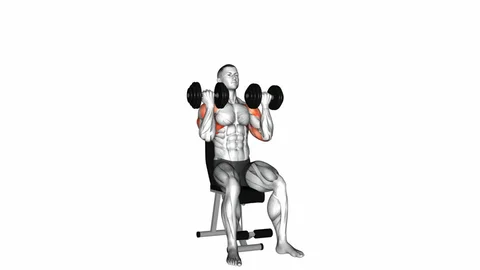
How I do it:
- Grab a pair of dumbbells tart with the weights at shoulder level. , sit on a bench with back support. Then I press ‘em straight up — not flaring my elbows too much — and bring them back down slow and controlled.
- At first, I used to arch my back way too much, which made it feel more like a chest press. So now I keep my core tight and feet planted.
- Also, I don’t lock out fully at the top — keeps the tension right where I want it.
Target: Front delts (anterior deltoid), Side delts (lateral deltoid), Triceps, Upper traps
Tips: Keep your elbows a little forward, not flared out wide. Feels way better on the joints.
- Side-Lying Lateral Raise – Burns like hell
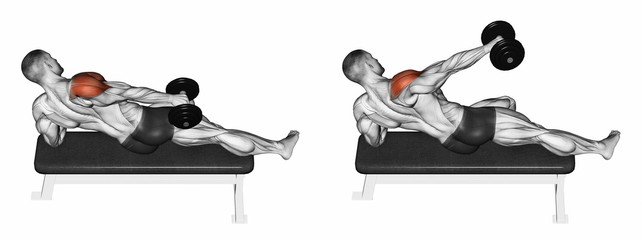
How I do it:
- I grab two light dumbbells and raise them out to the sides till my arms hit about shoulder height.
- Slight bend in the elbows.
Target: Side delts (lateral deltoid), Supraspinatus, Traps
Tips: Go light. Like, embarrassingly light. But slow and controlled is the key.
- Arnold Dumbbell Press – A shoulder classic for a reason

How I Do It
- I press dumbbells from chest height while rotating my wrists so my palms face forward at the top.
- Keep it slow to nail the form and really hit the shoulders right.
- Afterward, I reverse that motion on the way down.
- Basically, it’s a press and a twist in one move. I do it seated, but standing works too — just gotta brace the core more.
Target: Front delts (anterior deltoid), Side delts (lateral deltoid) Rear delts (posterior deltoid), Triceps and upper chest
Tips: I slow the twist and keep elbows slightly forward — way easier on the shoulders. Light weight still hits hard if you do it right.
👉 Not sure how to push your training forward?
Check out 3 Best Dumbbell Shoulder Exercises That Actually Work — no guesswork, just what works.
Leg and Core Dumbbell Workout
Just a bench and some dumbbells? Yep — that’s all I used to hit legs and core hard.
- Dumbbell Step-Ups — Builds strong legs, boosts balance, and fires up each side on its own
![upper glute exercises step exercise [borrowing a box]](https://www.qdmodun.com/wp-content/uploads/2025/05/step-exercise-borrowing-a-box.png)
How I do it:
- Step up onto a bench or box while holding dumbbells.
- Push through the heel. Stand tall, then step back down and switch sides.
Target:
Mainly your quads and glutes, but your hamstrings and core jump in too. Basically, you’re working the whole lower half — one leg at a time — which helps with stability and real-world strength.
Tips:
Don’t cheat with the back leg. Keep your knee tracking forward.
- Dumbbell Elevated Hip Thrusts – Glutes and core = activated

How I do it:
- Upper back on a bench, feet flat, dumbbell on hips.
- Drive up through your heels.
- Squeeze hard at the top.
Target:
Glutes, hamstrings, core
Tips:
Keep that chin tucked and your core tight — seriously, it changes the game.
- Dumbbell Decline Overhead Sit-Up – Abs and shoulder control in one move
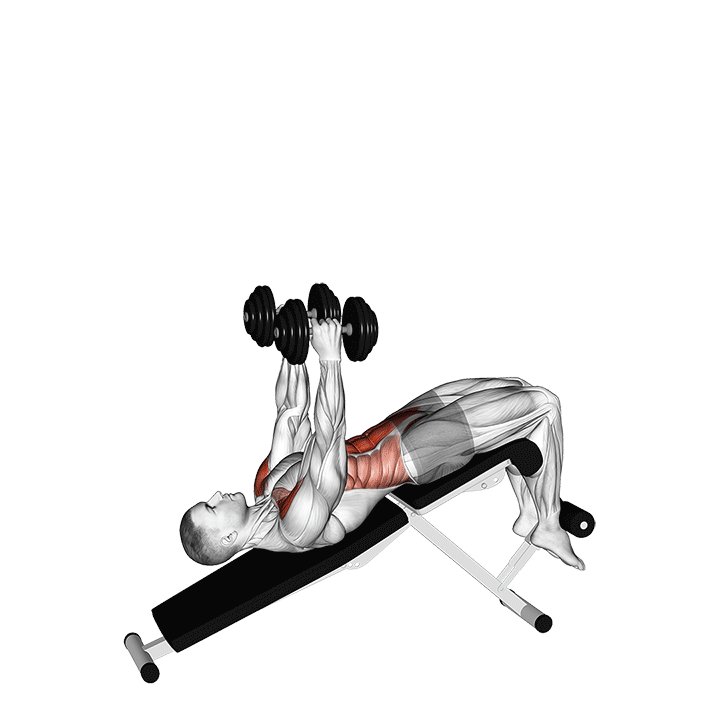
How I do it:
- Lie back on a decline bench with a dumbbell held straight above firstly.
- Sit up slowly then.
- Keep arms locked out.
- Lower down under control.
Target:
Abs (upper + lower), hip flexors
Tips:
Start with light weight and stay slow.
👉 Tired of just working harder with no results?
Here’s 3 Best Leg and Core Dumbbell Workout — and actually started seeing gains.
How I Make Progress with Just Dumbbells and a Bench
Honestly, I thought I’d hit a wall fast. I mean, how far can you really go with a bench and some dumbbells? But I figured out a few ways to keep pushing without needing a full rack of plates.
Here’s what worked for me:
- First, I upped my reps before touching heavier weights
- Then, I started adding slow negatives and pause reps — brutal but effective
- I always train close to failure, especially on the last set
- I track everything now — sets, reps, how it felt. No more winging it
- Even small jumps matter — just 5 lbs more can make a big difference
Pro tip: Once I started logging stuff, it totally changed the game. I stopped spinning my wheels and actually saw progress week to week.
I used to believe I needed a whole lineup of machines, fancy gear, and tons of space. Turns out, all I really needed was a solid plan and the discipline to stick with it. This bench and dumbbell routine kept me consistent, pushed my limits, and actually drove progress. If all you’ve got is a flat bench and a pair of dumbbells, trust me—it’s more than enough. Just keep showing up and doing the work.
Related Articles
6 Best Arm Workouts With Dumbbells For Next Arm Workout
6 Best Forearm Workouts with Dumbbells
7 Best Bicep Dumbbell Exercises Built My Arms
6 Best Dumbbell Tricep Exercises Boosted My Pressing Power
Barbell Curl vs Dumbbell Curl: Difference for Biceps Growth
Dumbbell Exercises for Rear Delts
Top Tricep Exercises with Dumbbells for Stronger Arms
FAQs about Best Dumbbell Bench Workouts
Yes, it is entirely possible to build muscle using just a bench and dumbbells. Dumbbells are highly effective for targeting various muscle groups, such as the chest, back, arms, shoulders, and legs. By incorporating compound exercises like the dumbbell chest press, dumbbell rows, and shoulder presses, you can work multiple muscles at once, promoting overall muscle growth. A bench adds versatility by allowing you to perform exercises at different angles, such as incline, decline, or flat positions, which can further target different parts of the muscle. The key to building muscle with dumbbells and a bench is ensuring progressive overload, where you gradually increase weight or reps to challenge your muscles. Additionally, proper nutrition and recovery play crucial roles in muscle development. With consistent training, you can achieve significant gains using just these two simple pieces of equipment.
Dumbbell bench presses are extremely effective for building upper body strength and muscle mass, particularly in the chest, shoulders, and triceps. Compared to barbell presses, dumbbells allow for a greater range of motion, which helps engage the muscles more fully and promotes better muscle activation. By using a bench, you can perform the exercise at different angles, such as flat, incline, or decline, each of which targets different areas of the chest. Flat dumbbell bench presses primarily work the middle part of the chest, while incline presses emphasize the upper chest and shoulders. This exercise also helps improve shoulder stability, as each arm works independently, which can help correct muscle imbalances. To maximize the effectiveness of the dumbbell bench press, it’s important to maintain proper form and gradually increase weight or reps over time, ensuring continuous progress and muscle growth.
The 4-2-1 dumbbell method actually is a tempo-based training style. You lower the weight for 4 seconds (eccentric), lift it in 2 seconds (concentric), and hold the top for 1 second (peak contraction). This slow, controlled tempo increases time under tension, leading to better muscle activation and growth. It’s great for dumbbell presses, rows, and squats. The focus is on quality reps, not just heavy weight, which makes it ideal for breaking plateaus and building strength and size.
The 6-12-25 method actually combines three rep ranges in one set: 6 reps heavy (strength), 12 reps moderate (hypertrophy), and 25 reps light (endurance). You target multiple muscle fibers and chiefly training goals in a single sequence. It’s tough but super effective for presses, squats, or curls. This mix boosts size, stamina, and strength, all in one workout. Adjust weights actually based on your level — and get ready to feel the burn.
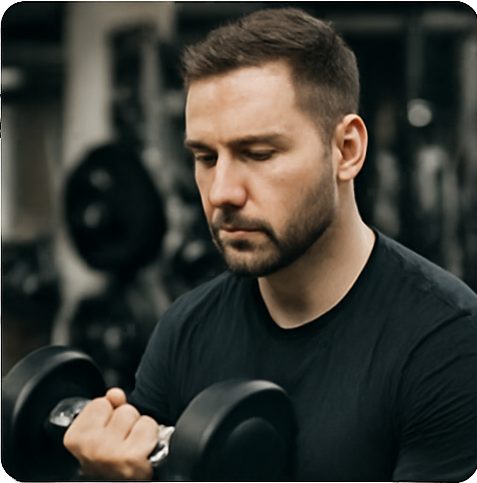
Hi, I’m the editor here at Leadman Fitness. We’re a manufacturer focused on producing top-quality barbells, plates, kettlebells, dumbbells, and strength training gear. I’ve been into sports and fitness for years, and I know my way around all kinds of gym equipment—both from using it and helping create it.
I spend a lot of time understanding the real problems people run into in the gym—whether it’s beginners trying to pick the right gear or experienced lifters looking for something more durable. I stay in close touch with our production team and talk directly with other equipment makers, so we’re always improving based on what real lifters and coaches are looking for.
What I share comes from hands-on experience—stuff that actually helps people train better, not just in theory, but in real gyms.
